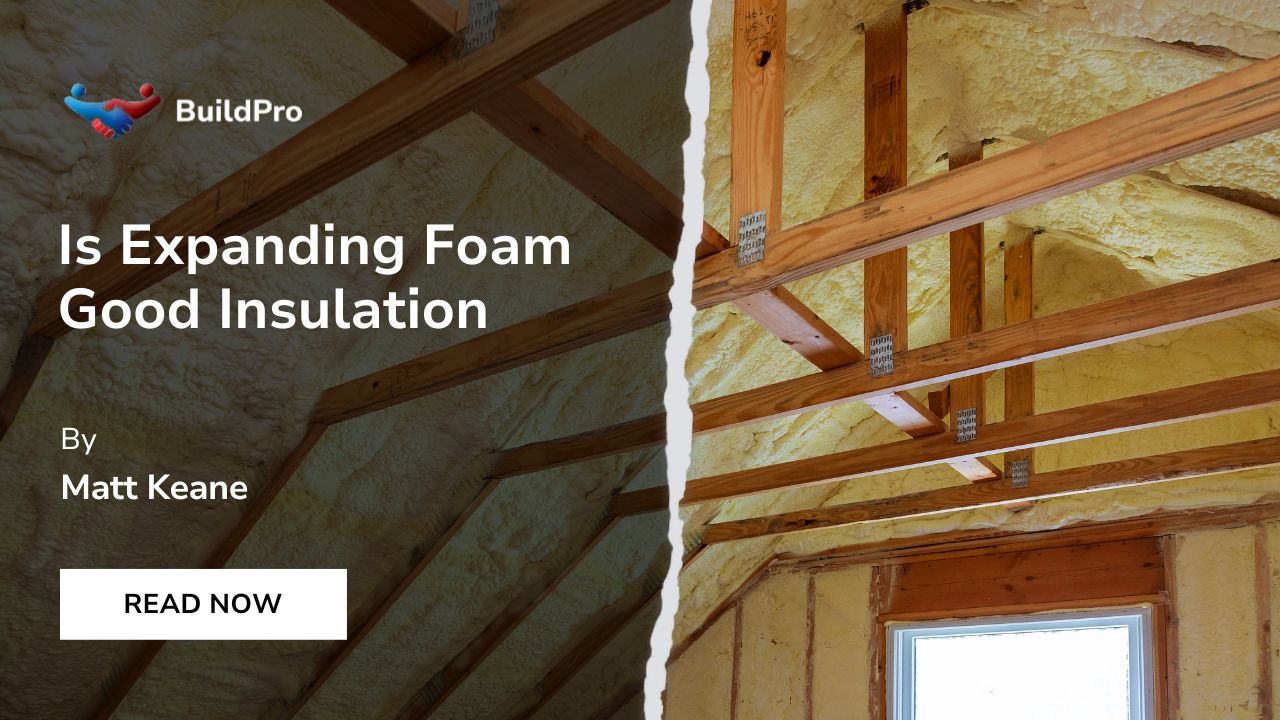Are you looking for a way to improve the energy efficiency of your home or building project? Do you want to reduce your heating and cooling costs and create a more comfortable indoor environment?
Expanding foam, or spray foam insulation, might be the solution you're exploring. This versatile insulation is applied as a liquid, swiftly expanding to seal gaps and cracks in various surfaces, making it ideal for new builds, renovations, or upgrades.
This blog post will guide you through expanding foam's workings, pros and cons, and selection tips. By the end, you'll know if expanding foam is the right choice for your insulation needs and how to apply it effectively.
What is Expanding Foam and How Does It Work?
Expanding foam is a synthetic material that consists of two components: a resin and a catalyst. When these two components are mixed together, they react and create a foam that expands up to 100 times its original volume. The foam then hardens and forms a solid barrier that adheres to the surface it is applied to.
Expanding foam works by creating an air-tight and moisture-resistant seal that prevents heat transfer and air leakage. This means that it can keep the indoor temperature stable and reduce the amount of energy needed to heat or cool the space. Expanding foam also acts as a soundproofing material, as it can reduce noise transmission through walls and floors.
There are two main types of expanding foam: open-cell and closed-cell. The difference between them is the size and structure of the cells that make up the foam. Open-cell foam has larger and more irregular cells that are filled with air, while closed-cell foam has smaller and more uniform cells that are filled with gas. These differences affect the properties and performance of the foam, as we will see in the next section.
What are the Advantages and Disadvantages of Expanding Foam?
Expanding foam has many advantages over conventional insulation materials, such as:
- It can fit into any shape and size of space, even in hard-to-reach areas, and create a continuous layer of insulation without any gaps or seams.
- It can provide a higher R-value (a measure of thermal resistance) per inch of thickness than most other insulation materials. This means that it can provide more insulation with less material and space.
- It can improve the structural integrity and durability of the building, as it can resist compression, impact, and wind loads.
- It can prevent the growth of mould, mildew, and pests, as it does not absorb water or provide a food source for them.
- It can increase the indoor air quality and comfort, as it can eliminate drafts, allergens, dust, and pollutants.
However, expanding foam also has some disadvantages, such as:
- It can be more expensive than other insulation materials, especially if you need to hire a professional contractor to install it.
- It can be difficult to apply correctly, as it requires special equipment, skills, and safety precautions. If not done properly, it can cause health hazards, fire risks, or damage to the building or the environment.
- It can be hard to remove or modify, as it adheres strongly to the surface and does not shrink or settle over time. If you need to access or repair the area behind the foam, you may have to cut or tear it out, which can be messy and wasteful.
- It can have a negative environmental impact, as it is made from non-renewable petroleum-based materials and can emit greenhouse gases during its production and application.
How to Choose the Right Type and Amount of Expanding Foam for Your Project?
Depending on your project’s specifications and goals, you may need to choose between open-cell and closed-cell expanding foam or use a combination of both. Here are some factors to consider when making your decision:
The climate and location of your project
If you live in a cold or humid climate, you may want to use closed-cell foam, as it can provide more insulation and moisture resistance than open-cell foam.
However, if you live in a hot or dry climate, you may prefer open-cell foam, as it can allow more breathability and vapour diffusion than closed-cell foam.
The type and condition of your surface
If you have a rough or uneven surface, you may want to use open-cell foam, as it can conform better to the shape and texture of the surface.
However, if you have a smooth or flat surface, you may want to use closed-cell foam, as it can create a more rigid and uniform layer of insulation.
The amount of space and budget you have
If you have limited space or budget, you may want to use closed-cell foam, as it can provide more insulation with less material and thickness.
However, if you have more space or budget, you may want to use open-cell foam, as it can provide more soundproofing and comfort with more material and thickness.
Conclusion
Expanding foam stands out as a versatile insulation choice, offering remarkable benefits in thermal performance, air sealing, moisture resistance, soundproofing, and even structural reinforcement. Yet, its drawbacks, including cost, application challenges, and environmental considerations, require careful evaluation.
If you are interested in using expanding foam for your project in Ireland, partnering with BuildPro could be the best solution. With our comprehensive expertise in planning, design, and construction, we ensure the effective, safe installation of expanding foam tailored to your project's specific needs.
Reach out for a no-obligation consultation and quote, and let us assist in achieving your project's insulation objectives.















